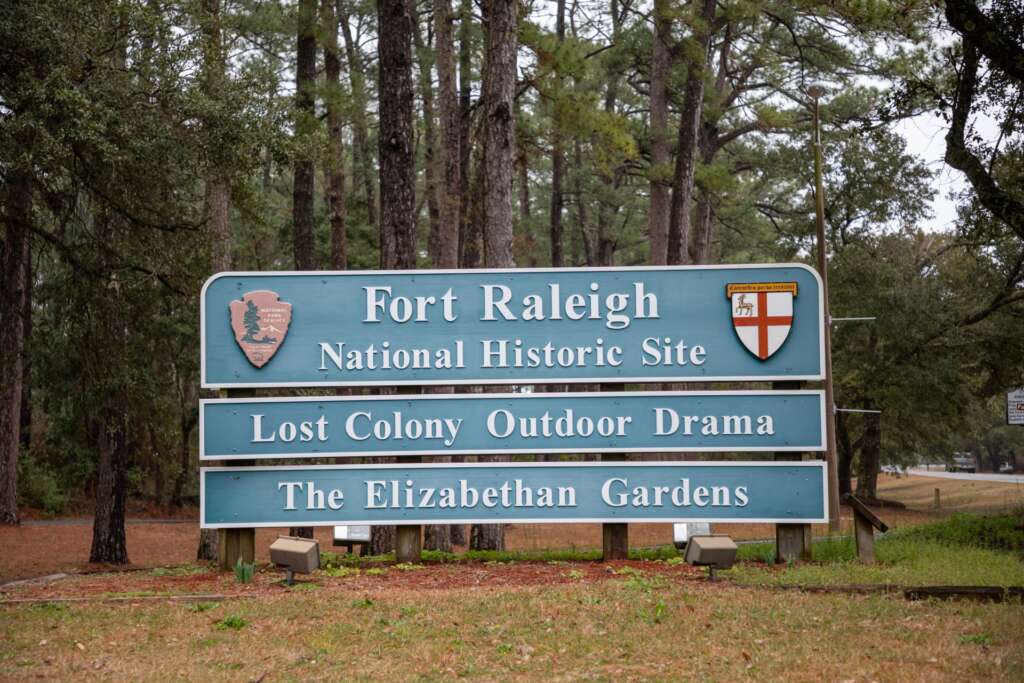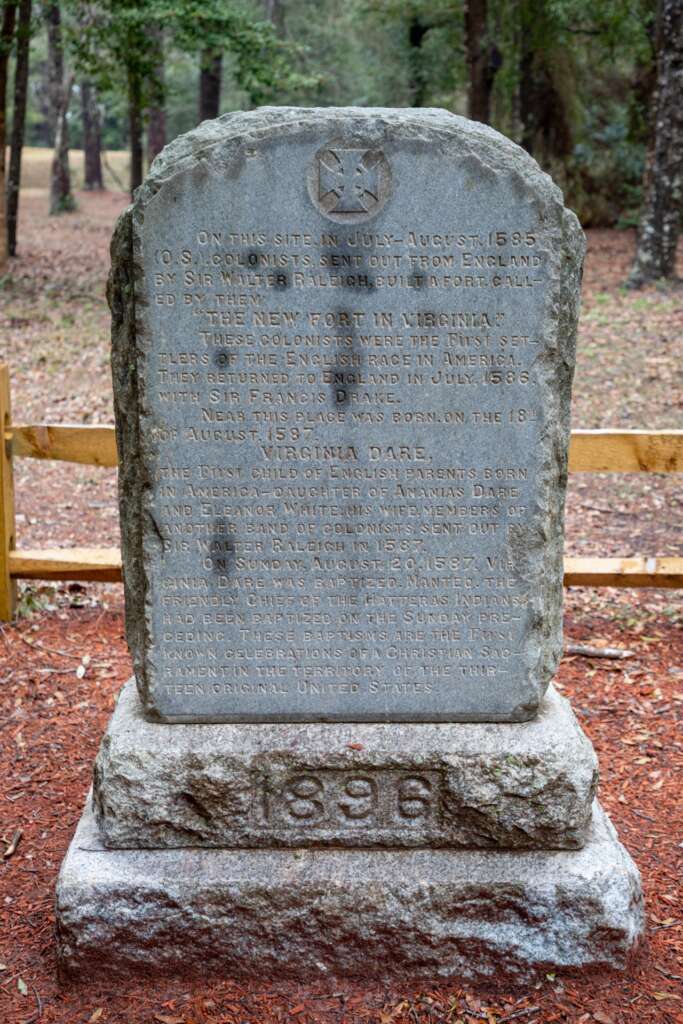People disappear. As eerie as it is, it happens every day. But what are we to think when 115 men, women, and children vanish? Well, that’s a mystery that has baffled archaeologists and historians for centuries, and it remains one of the oldest cold cases in all of American History.

The haunting story of a missing Roanoke settlement known as The Lost Colony began in 1587 when Sir Walter Raleigh made his second attempt at founding the first permanent English settlement in North America, after his first attempt had failed two years prior. The colony was led by Governor John White with a goal of establishing the “Citie of Raleigh” in Chesapeake Bay. The people had endured 76 days at sea crossing the Atlantic because they’d been desperate for a better life than what they’d had in England. But in an unfortunate twist of fate, their lives were forever changed when their ship’s pilot, Simon Fernando, succumbed to his pirate tendencies. He’d decided it was time to plunder Spanish ships and left the colony on Roanoke Island, instead of taking them to Chesapeake Bay.
The colony most likely would’ve survived in Chesapeake Bay. There were more natural resources, the Native Americans were more friendly, and the supply mission probably would’ve succeeded. On the other hand, Roanoke Island was riddled with challenges that may have led to the colony’s failure.
White’s diary is the only written account of the colony’s journey. In it, he described Roanoke Island as having dense woods and unfriendly natives, and noted that the colony built houses on a hilled embankment, surrounded by a wooden palisade for protection.
Their first summer on the island was relatively successful. White’s daughter, Eleanor, gave birth to the first child born in North America — Virginia Dare. But soon, the challenges mounted. They needed more people and supplies began to deplete.

In August 1587, White sailed for England on a supply mission and left the colony behind with an inexperienced leader. Just prior to his arrival in England, Queen Elizabeth feared Spanish invasion and ordered that all ships remain in English ports. Therefore, instead of returning with supplies in 3 months, White was unable to return for 3 years.
In 1590, White returned. According to his diary, he walked up the sandy embankment and saw a tree with the letters “CRO” carved into it. He continued to the settlement and found nothing. No daughter. No Granddaughter. No people. No houses. The only thing remaining was the wooden palisade. White believed the cryptic message carved into the tree was a sign that the colony had relocated to an island to the south called Croatoan, which was inhabited by a Native American tribe of the same name.
John White attempted to sail to the island, but a wild storm swirled up winds that pushed him away from the island, thwarting his only hope in finding his daughter, granddaughter, and the colony he’d hoped to save.
What happened to the colony of 115 people? Did they survive? If so, where did they go?
In order to take a guess at their possible relocation, the first step is to pin down where the colony had originally settled when they first arrived on the island. Anne Poole of The Lost Colony Research Group has been determined to solve step one of the mystery. Where did the colonists first settle on Roanoke Island? Due to over 400 years worth of erosion, it’s possible that over half a mile of the east side of the island that was exposed in 1587 may now exist underwater.
According to White’s diary, the area where the colonist’s had originally settled had a large growth of Scuppernong grape vines. There is one location on the island with those vines and it is 3 miles away and now underwater. While Anne and her team scoured the shallow areas for signs of the colony, professional divers Duncan Pinnock and Randy Glaze were hired to explore the deeper areas. The team in the shallow area discovered pieces of pottery from the 16th Century from jugs of the identical style and time period of the Roanoke colony. Could this be enough evidence to determine that the colonist’s had originally settled there? If so, the carved tree sat 3 miles north of the settlement, hinting at the idea that the group may have been traveling north toward their final destination, leaving their “CRO” clue along the way to Albemarle Sound.
This theory seems plausible at first. However, the journey down Albemarle Sound would have led the colony into hostile territory — the area where another group of settlers had attempted to inhabit years prior. Raleigh’s first failed attempt at a settlement in North America was located at Albemarle Sound in 1585. This colony had been led by Ralph Lane, who eventually accused the natives of stealing from them. Lane burned their village, killing several members of the tribe. And John White had visited the settlement, becoming aware that it was hostile territory. Did he warn his own colony of the dangerous area two years later when they settled on Roanoke Island? Many believe it’s highly unlikely the colonists would’ve chosen to settle there. If they had relocated, Croatoan Island seemed to be their best bet.
Historian Scott Dawson and archaeologist Mark Horton have been digging on Croatoan Island since 2009 and their findings have continually shed light on this mystery. European artifacts found include a sword, a gun, stoneware, a copper ring, and a 16th Century coin. They tested a piece of copper they had found that proved to be of European origin, as traces of arsenic indicated the metal had been refined in England.
It seems likely the colonists had relocated to Croatoan Island, but did they survive?
Computer Scientist Roberta Estes of The Lost Colony DNA Project has been determined to find out if any of the locals on the island, which is now called Hatteras Island, are a mixture of Native American and English ancestry. If so, this DNA evidence could provide proof that the colonists had procreated with the Croatoans and that their offspring had survived. This is determined by looking for matches of paternal ancestry that could be traced back to the colonists. While the DNA project is ongoing, the results have been promising as the number of mixed ancestry in the area continues to grow. Until there is an answer, the mystery of the Lost Colony of Roanoke Island continues!

1 thought on “The Lost Colony of Roanoke Island”